What is a Load Cell?
A load cell is a type of a force transducer that converts any change in pressure, compression, tension, or torque into electrical signals that can be measured. Based on the change in the electrical signal the weight of the object can be obtained.
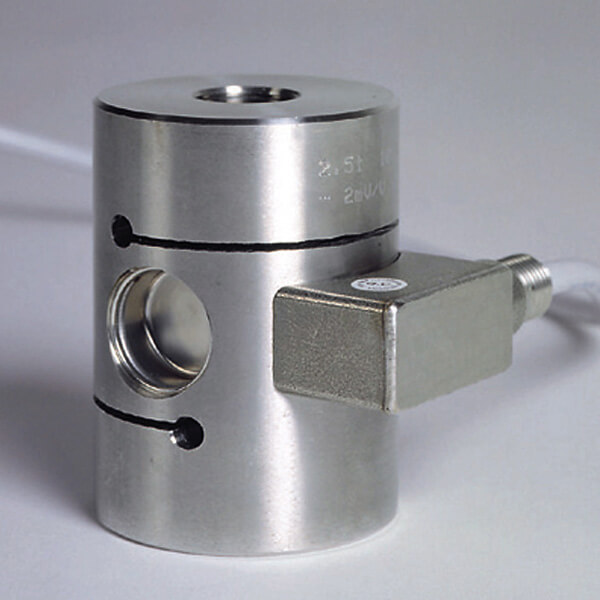
Image: controls-group.com
Though there is a variety of load cells available, strain-gauge load dominates the weighing industry. But before we go into details of a strain-gauge load cell, let’s understand the types of a load cell.
Types of Load Cells
- Hydraulic Load Cell: Hydraulic load cells are known as force-balance devices that measure weight as the internal fluid pressure changes. It uses a conventional cylinder and piston arrangement that compresses the fluid present within a diaphragm chamber. Since force is directly proportional to pressure, the pressure of the fluid increases as the force is increased. This pressure is then transmitted for remote control or indication.
- Pneumatic Load Cell: Pneumatic load cells work similarly on the force-balance principle and are used for measuring smaller weights in areas where safety and cleanliness are necessary. It consists of a diaphragm to which the pressure is applied. The pressure is then released through a nozzle placed at the bottom of the load cell. And this pressure is measured using a pressure gauge attached to the cell. The diaphragm deflection affects the pressure inside the chamber as well as the airflow through the nozzle.
- Strain Gauge Load Cell: A strain gauge load cell is used to measure the change in resistance by applying force. It consists of a foil or fine wire fixed in a grid pattern. When strain is applied along the axis, it results in a change in resistance.The change in strain gauge is based on the compression and tension load cells. The tension force applied on the foil causes it to get thinner, i.e., longer, which results in increased resistance. On the other hand, the compression force causes the wire to get thicker and shorter, which results in decreased resistance. And when these small changes are interconnected, the measurements are accurate.
- Piezoresistive Load Cell: Piezoresistive load cells are perfect for simple and small weighing systems and are directly connected to a readout meter. Instead of correlating the beam strain, it measures the force directly. It is used for frequent force measurements, for example, dynamic loading conditions where there is a risk of strain gauge load cells failing due to high dynamic load cycles.
- Inductive and Reluctance Load Cell: Inductive and reluctance load cells respond to ferromagnetic core displacement proportional to weight. Inductive load cell changes solenoid coil’s inductance through the movement of the iron core while the reluctance load cell changes the reluctance of a small air gap.
- Magnetostrictive load cells: The operation of a magnetostrictive load cell is based on the change of a ferromagnetic material’s permeability when stress is applied. Under pressure, stresses cause flux pattern distortion. This then generates an output signal which is proportional to the load applied. Magnetostrictive load cells are used for weight and force measurement in strip mills and rolling mills.
Strain-Gauge Load Cell
Strain-gauge load cells are the most preferred and reliable option for a variety of testing and weighing applications. Here’s why:
- They are convenient.
- They allow sensors to be installed directly onto the equipment or machinery for more accurate results.
- They are sensitive to change and are, hence, more responsive.
- They are economically viable.
Types of Strain-Gauge Load Cells
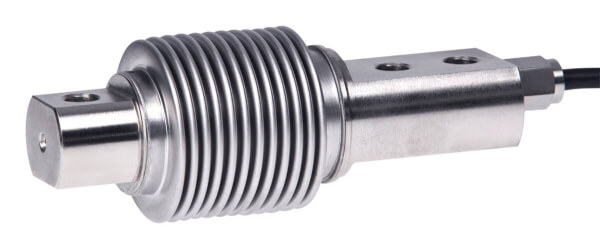
Image:bosche.eu
- Bending Beam Load Cell: Bending beam load cell monitors the stress when a bending force is applied to the spring. Its applications include industrial floor scales, filling machinery, silo and tank weighing, medical equipment, on-board vehicle weighing, etc.
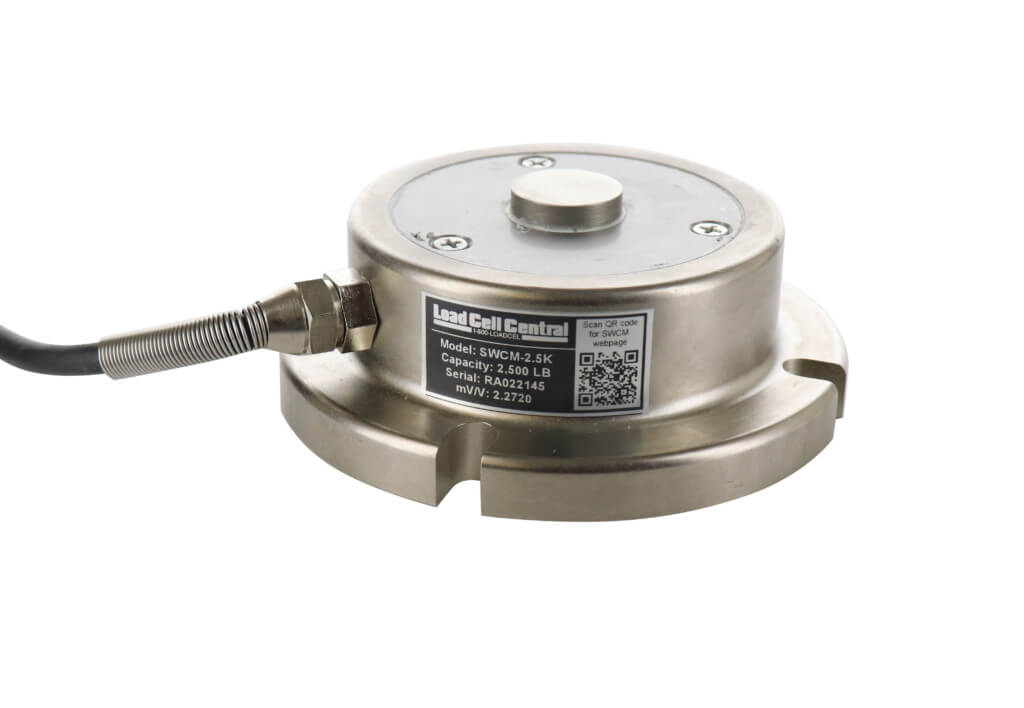
- Pancake Load Cell: Pancake load cells are designed using bonded foil strain gauges for accurate results in environments with higher temperatures. They are preferred for their high-frequency response, and its application includes crash test walls.
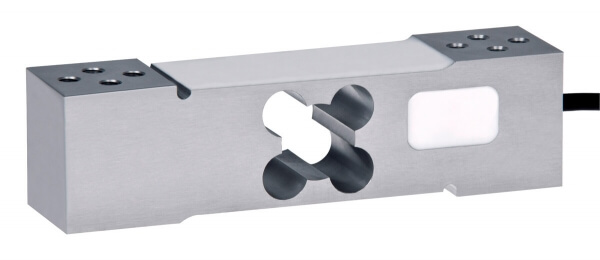
Image: bosche.eu
- Single Point Shear Beam Load Cell: Single-point shear beam load cell consists of a spring element which is fixed on one of the ends and is loaded on the other. They are popular for their high accuracy and reliability.;
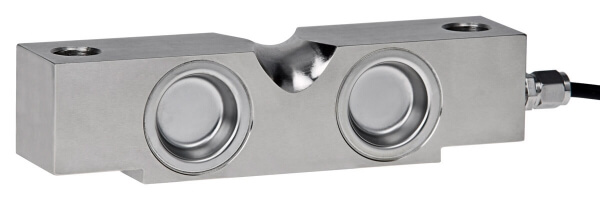
Image: bosche.eu
- Double-Ended Shear Beam Load Cell: In a double-ended shear beam, the force acts on the center which makes the spring element to deform. The deformation is picked by the strain gauge and converted to electrical signals. Double-ended shear beam load cells are used in heavy-load scales and are suitable for silo scales, vehicle scales, weighing frames, etc.
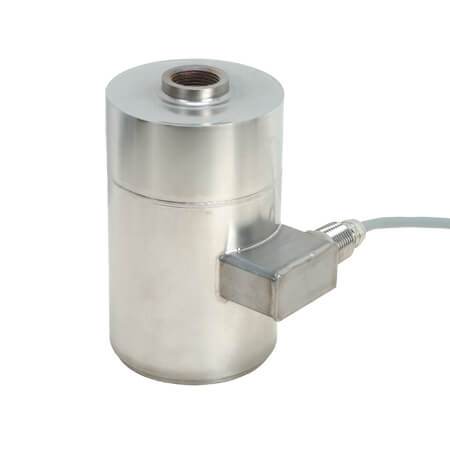
Image:omega.com
- Canister Load Cell: Canister load cell has a cylinder-shaped spring element which measures both compression and tension. A canister load cell is ideal for high capacity tank scales, truck scales, and rail scales.
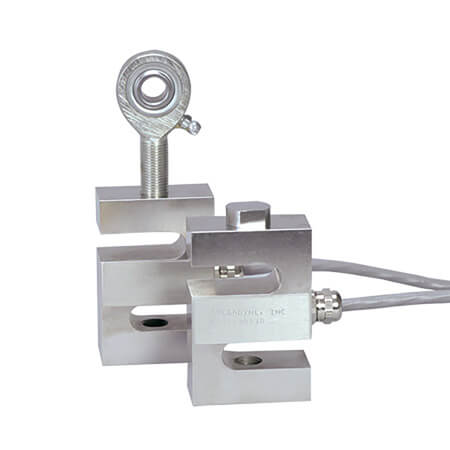
Image:omega.com
- S-Shaped Load Cell: S-shaped load cell is used to measure tensile force but also works well when measuring compression force since the spring element in this load cell is located at the center. It is used in medical devices such as weighing devices and patient lifting systems.
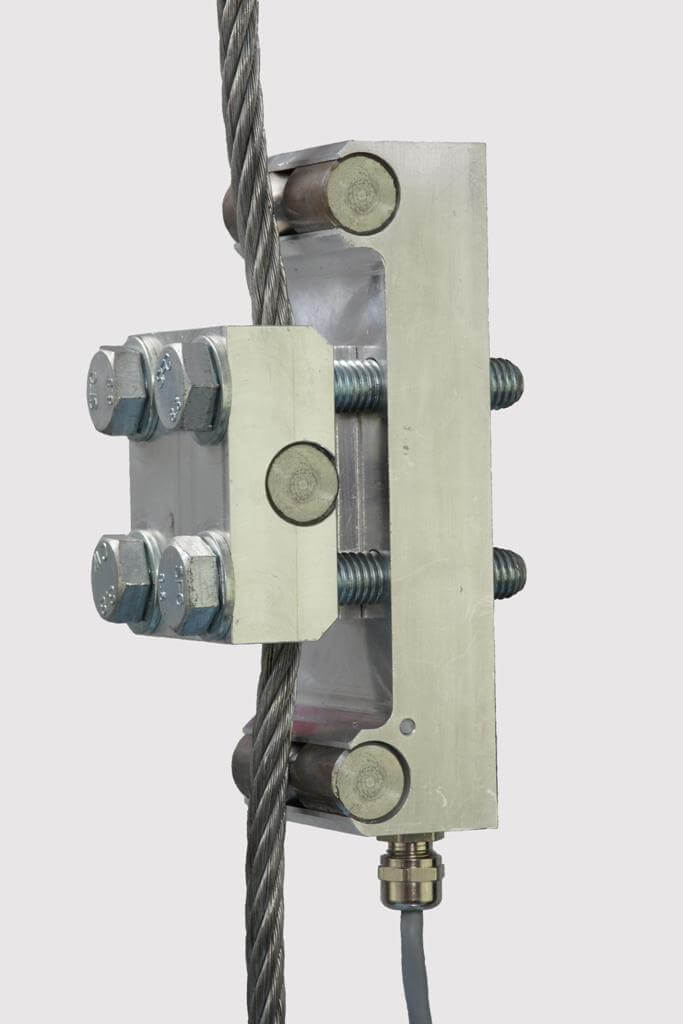
Image: vetec.sg
- Wire Rope Clamp Load Cell: It is an assembly installed at the dead-end of the cable to measure the tension on the rope. It is designed for crane and hoist purposes.
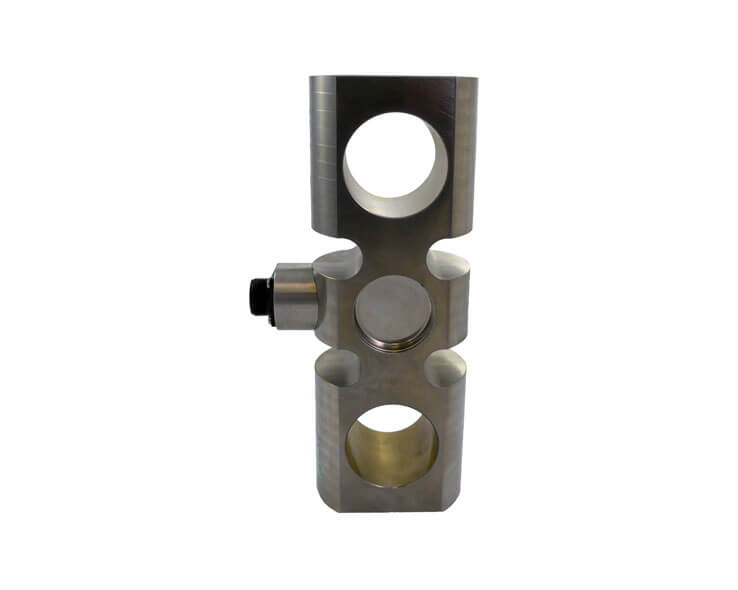
Image: pcm-uk.com
- Tension Link Load Cell: A tension link load cell is ideal for measuring in-line tension. It is designed for measuring pulling force with its applications in cables on cranes, towing equipment, hoist scales, and tensile verification systems.
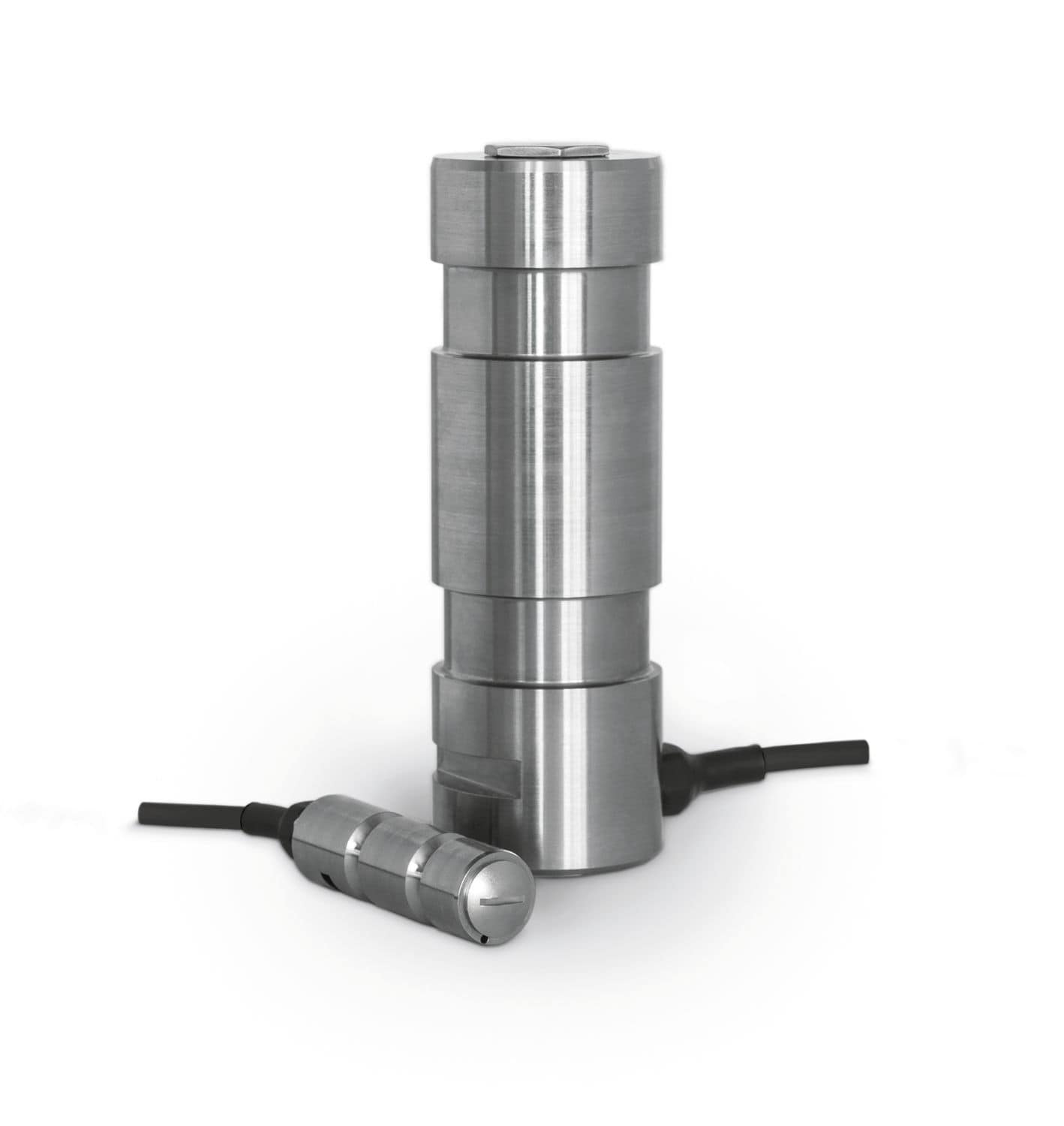
Image: magtrol.com
- Load Pin: Load pin load cell is designed to sense the force applied to it through a strain gauge placed at the center of the pin. It’s used as a replacement of pivot pins, clevises, or normal shafts in machines.
Load Cell Calibration
Regular calibration of load cells is required because, over time, they age, drift, and misalign. According to ISO9000, the maximum period between re-calibration is 18 months to 2 years. However, for most accurate measurements, annual calibration is suggested.
Issues Observed in Load Cells
- Mechanical Mounting– Wrong mounting can result in the force applied along the undesired axis, and the force may correlate to the sensed load, which can confuse the technician.
- Overload – If the load cell is subjected to loads above its maximum capacity, the material may plastically deform, resulting in loss of linearity, signal offset, difficulty in calibration, and mechanical damage.
- Wiring Issues – Due to corrosion, the wires may develop high resistance. And the ingress of moisture may develop parallel current paths resulting in loss of accuracy.
- Electrical Damage – Induced or conducted current can damage the load cell. Lightening or arc welding can overstress the resistors and cause damage in the strain gauge.
- The Particularity of Application – If the load cell doesn’t suit the type of pressure and specific magnitude, then the accuracy, reliability, and resolution may be compromised.
Quality Scales Unlimited has a range of products such as Truck scale, Analytical Balance, Livestock scale and load cells that can be used for many applications. For more information on selecting the load cell that will best fit your needs, contact Quality Scales Unlimited.




